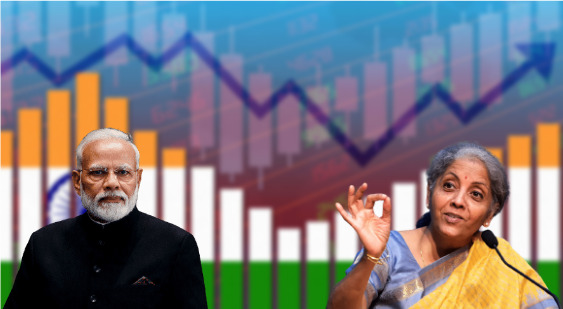India is in the midst of a major economic boom. The GDP is expected to witness near double-digit growth in the ongoing Financial Year. Finance Minister Nirmala Sitharaman has said that healthy growth will sustain itself over the entire decade.
Nirmala Sitharaman said, “I expect that (growth) to be sustained for the next decade, because the rate at which expansion in core industries is happening, the rate at which services are growing, I don’t see a reason for India (growth) to be any way less (in) the coming decade.” Interestingly, the signs of India’s economic boom are also becoming visible at the state levels.
Healthy capital expenditure by states:
As per Financial Express, the state governments have shown remarkable improvement in capital expenditure in the first five months of the ongoing Financial Year. The development has run counter to talks of the state governments not being able to manage themselves due to the shock effect created by the COVID-19 Pandemic.
Financial Express gathered data from 20 states that showed a combined capital expenditure of Rs 1.21 lakh crore from April to August. This is a healthy rise of 70 per cent in capital expenditure as against a decline of 35% over the same period in the previous Financial Year.
The growth in capital expenditure is so high that it has crossed even the pre-pandemic levels. The CapEx of the 20 states is 10% higher when compared to the corresponding period in the Financial Year 2019-20. The 20 states have been helped by a massive 34% jump in tax receipts to Rs 6.86 lakh crore.
Uttar Pradesh leads the charts in CapEx growth;
Some of the states have shown impressive growth in CapEx and the state of Uttar Pradesh, in particular, has managed to augment CapEx dramatically.
UP has witnessed 1,344% growth in CapEx to Rs 18,809 crore from April to August in the current Financial Year from Rs 1,303 crore over the same period in the previous Financial Year.
Meanwhile, CapEx went up by 88% in Madhya Pradesh, 31% in Karnataka and 57% in Gujarat.
The Centre is also incentivising investment-led growth:
The Indian economy is banking on investment-led growth revival. While the states have ramped up CapEx, the Centre too has roped in the Central Public Sector Enterprises (CPSEs) to push public CapEx.
Large CPSEs achieved 30 per cent of their aggregate CapEx target for the current Financial Year in the first five months themselves. The capital expenditure by large CPSEs went up to Rs 1.77 lakh crore in the first five months.
Meanwhile, the Centre is encouraging higher CapEx by state governments. It has given the flexibility to the state governments to borrow 75% of their annual net market borrowing limit of Rs 8.47 lakh crore or 4% (50 bps of which linked to achieving CapEx targets) of their respective gross state domestic product (GSDP) in the first nine months of the current Financial Year.
What is powering India’s mind-boggling growth:
With the slew of reforms introduced over the last seven years, the Modi government has propelled a long cycle of growth that could last an entire decade or more. The GDP grew at a record pace of 20.1 per cent in the first quarter of FY22 — the highest-ever GDP growth in a single quarter.
The Indian economy has shown a good deal of resilience throughout the Pandemic. The Atmanirbhar (self-reliance) push given by Prime Minister Narendra Modi has reinforced the fundamental character of the Indian economy that doesn’t get disrupted by external issues.
Now, the market sentiment in India is improving. Foreign investors are bullish about the Indian economy and stock markets. So, more investments are flowing into the Indian economy, which is further boosting the GDP growth numbers. The fundamentals of the Indian economy look strong, and the effects of the economic boom are also trickling down to the state levels.































